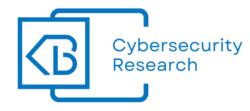DevSecOps implementation
Background
TechNex Solutions, whose name has been anonymized for confidentiality purposes, was stuck with the waterfall development model. This led to slow development cycles and last-minute security checks, resulting in problems and missed opportunities.
Problem
Our outdated model was slow, and security was added too late in the process. This caused security lapses and wasted valuable time.
Solution
I initiated the transition to DevSecOps at TechNex Solutions. Here’s how:
- CI/CD Pipeline (Azure DevOps): Implemented Azure DevOps to create a continuous integration and continuous delivery (CI/CD) pipeline, facilitating more rapid development cycles.
- Automated Testing (Selenium): Integrated Selenium for automated testing to catch errors quickly.
- Security Integration (SonarQube): Utilized SonarQube within the CI/CD pipeline to detect security vulnerabilities at an early stage.
- Agile Practices (JIRA): Adopted JIRA for agile project management, allowing for swifter changes and improvements.
Results
With the implementation of DevSecOps, utilizing tools like Azure DevOps, Selenium, SonarQube, and JIRA, we saw:
- Faster Development: Development cycles were reduced, enabling more frequent releases.
- Improved Security: Early-stage security checks identified fewer vulnerabilities.
- More Responsive to Clients: We became more agile and could respond to client needs quicker.
In essence, TechNex Solutions’ efficiency and security were significantly improved through the DevSecOps implementation, and the integration of specific tools played a crucial role in this transformation.
